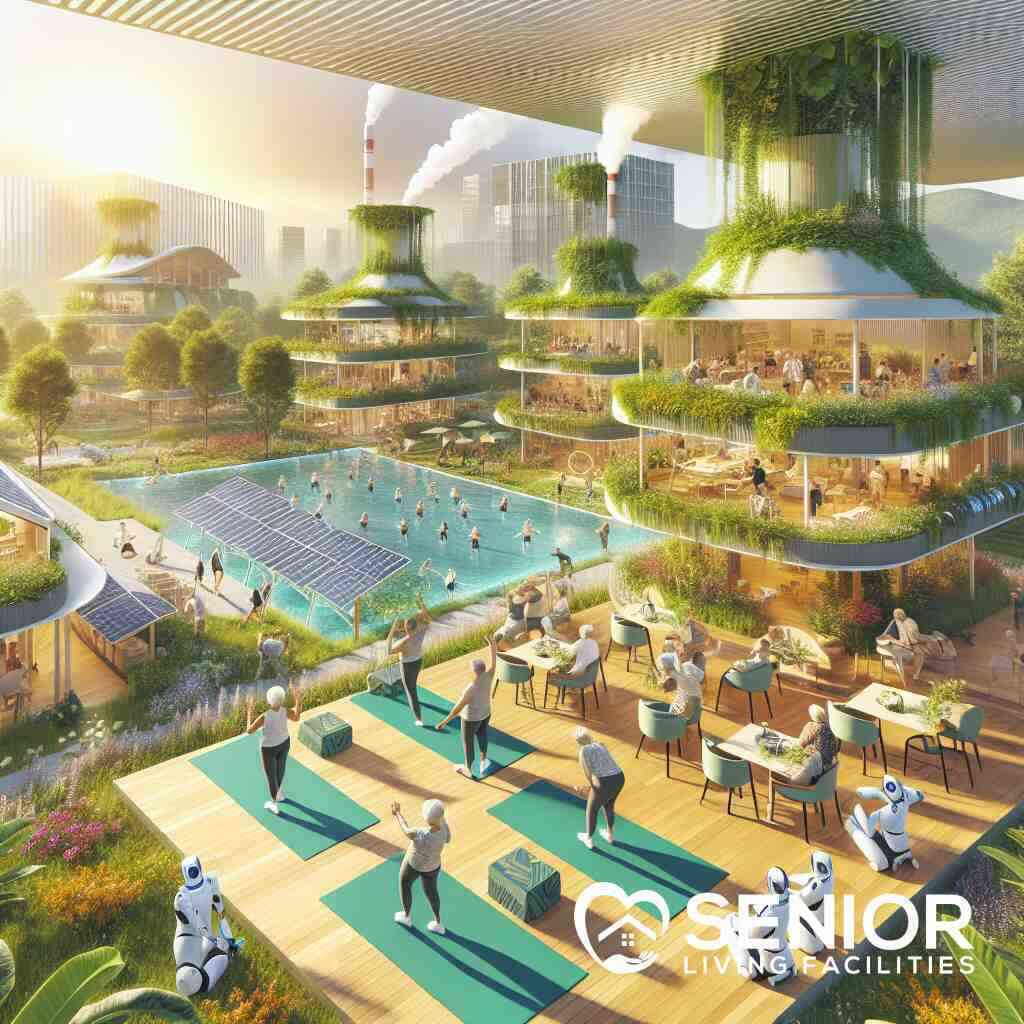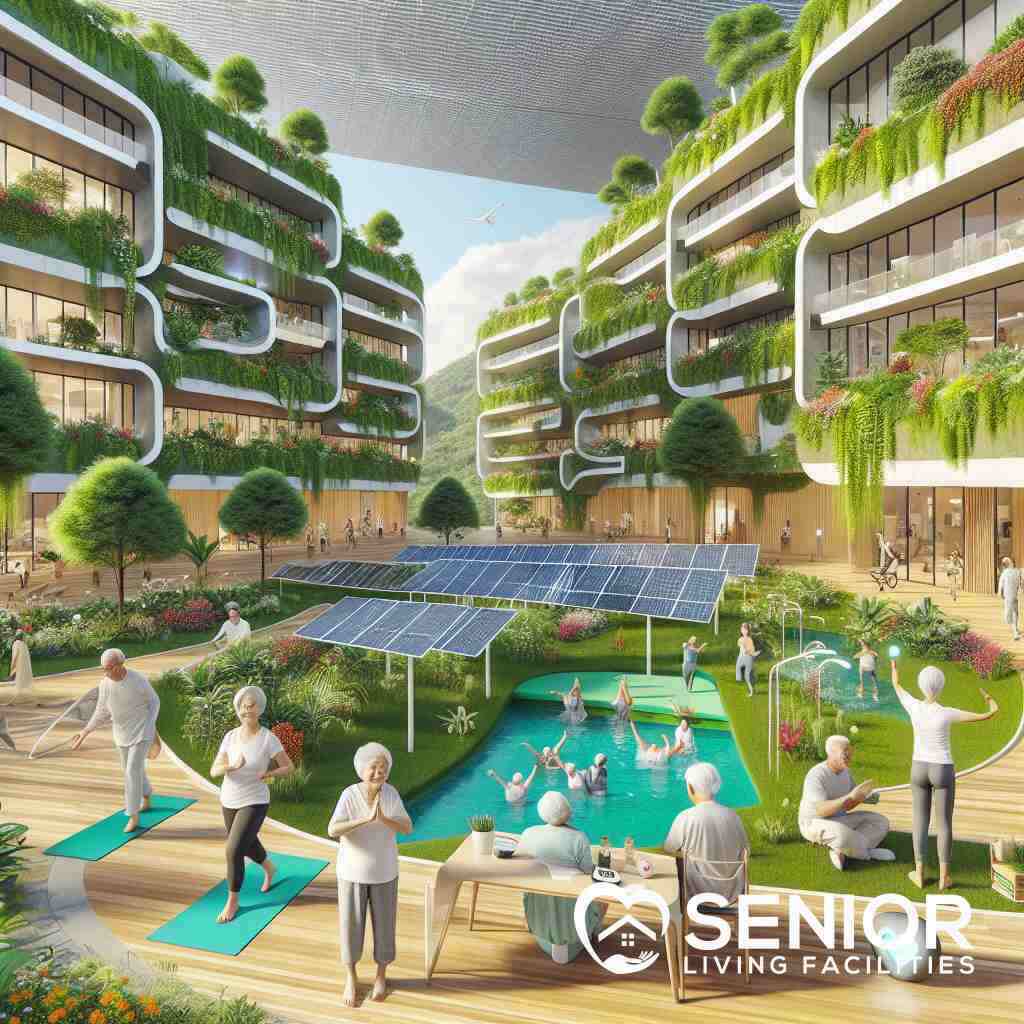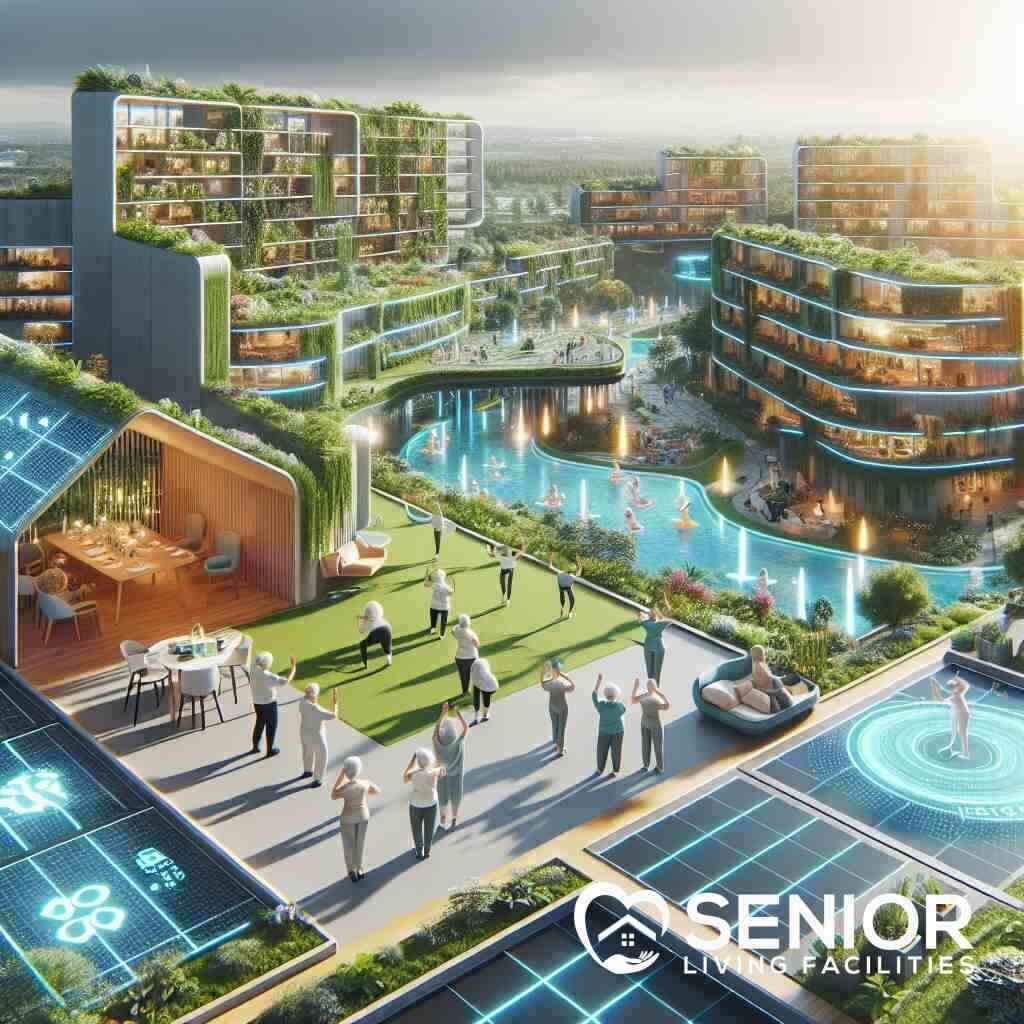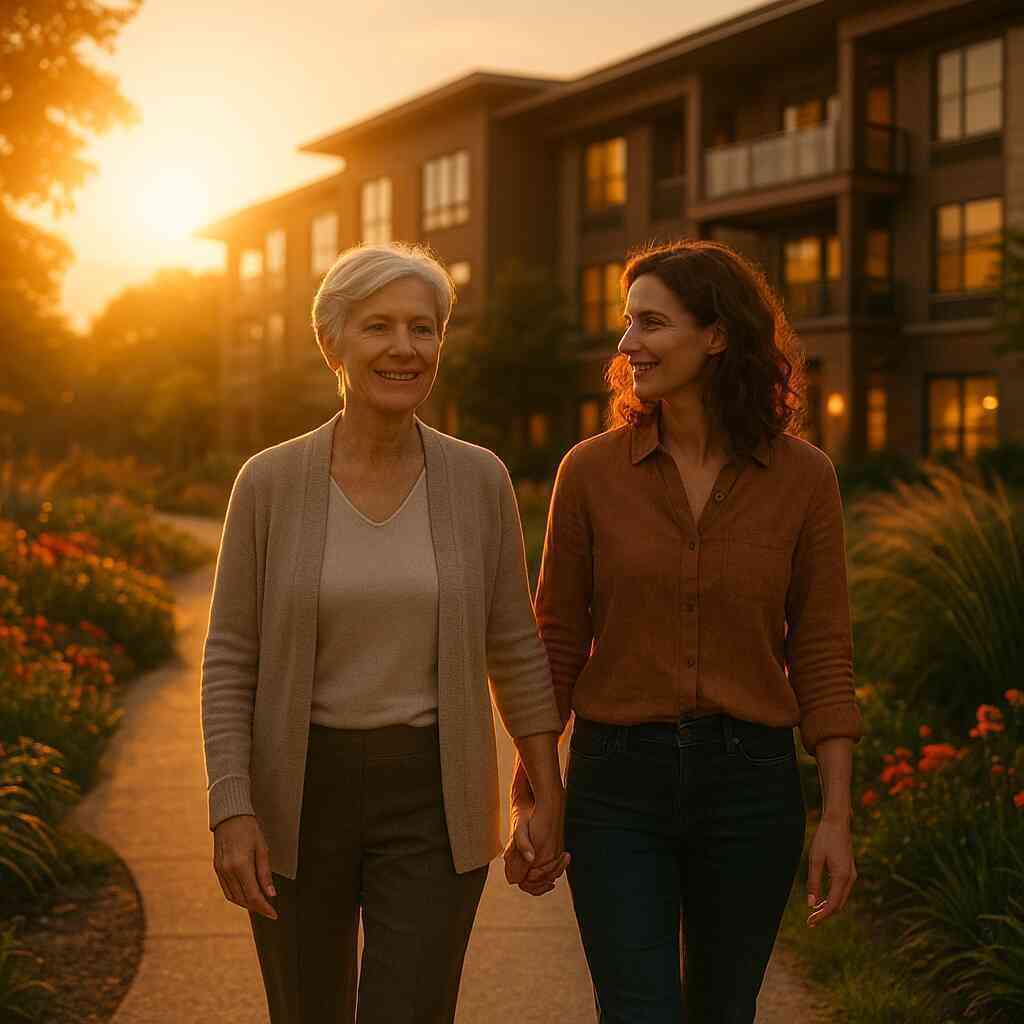
What Are Key Senior Living Facilities Innovations Today
October 18, 2025
Revolutionizing Senior Living Environments
Smart Homes for Seniors: The Future of Assisted Living
In the world of senior living, smart homes for seniors are transforming how we perceive traditional assisted living. Equipped with advanced eldercare technology such as voice-activated devices and smart sensors, these homes offer seniors unprecedented ease of living. Door sensors, automatic lighting, and safety-alert systems seamlessly integrate into these residences to foster independence and security. Smart homes boast digital health systems that allow for continuous monitoring, ensuring timely interventions when needed. As these technologies advance, senior living facilities are rapidly embracing these tools to make senior living more efficient while improving the overall quality of life for older adults.
Green Senior Living Facilities: Eco-Friendly Innovations
As climate consciousness rises, green senior living facilities are at the forefront of eco-friendly senior housing trends. Developers recognize the importance of creating environments that reflect sustainable eldercare practices, incorporating solar panels, rainwater harvesting, and energy-efficient systems. Implementing these sustainable practices reduces environmental impact while simultaneously lowering utility costs. The incorporation of green spaces around the facilities not only enhances the aesthetic appeal but also promotes the mental well-being of the residents. Facilities leveraging sustainable senior housing innovations are setting new benchmarks for how eldercare should proceed into the future.
Ergonomic Senior Living Design: Enhancing Comfort and Safety
Ergonomic design is vital in senior living environments, focusing on maximizing comfort and minimizing risk. From handrails and non-slip flooring to carefully designed furniture, every element is tailored to accommodate the physical needs of seniors. Thoughtful design of open spaces encourages residents to engage more in community activities while ensuring their safety. Advanced features such as adjustable countertops and customizable sleeping quarters actively enhance daily living experiences. Embracing ergonomic designs within senior living facilities not only improves the safety and comfort of residents but also fosters a sense of independence and empowerment. As these designs continue to evolve, they fundamentally transform senior living into enriching and enabling environments.
Harnessing Technology for Elder Care Excellence
AI in Senior Living: Transforming Elder Care Solutions
As the world continues to innovate, AI technology in eldercare is paving new paths. In senior living facilities, artificial intelligence aids in predictive analytics for health concerns, enhancing overall care strategies. These systems learn and adapt from data patterns, offering personalized health insights that are crucial for immediate interventions. AI algorithms assist caregivers by automating routine tasks, allowing more time and energy to be focused on personalized patient interactions. The integration of AI not only makes operations seamless but also empowers residents through intelligent solutions that cater to their unique needs.
Robotic Caregivers: Bridging Human Interaction and Automation
The advent of robotic caregivers marks a revolutionary shift in eldercare paradigms. These robotic assistants focus on complementing, not replacing, human touch in senior living communities. Robotics help with mundane tasks like medication reminders and basic housekeeping, reducing burnout among human caregivers. Moreover, they offer therapeutic interactions aiding mental stimulation for seniors, promoting cognitive well-being. In scenarios where social interactions are limited, robotic caregivers present a viable solution to mitigate loneliness, thus fostering a more interactive and fulfilling lifestyle for seniors.
Telehealth for Seniors: Broadening Access to Care
The implementation of telehealth services for seniors has significantly expanded the horizon of eldercare accessibility. By integrating telehealth into senior living solutions in New York, facilities enhance medical consultations, allowing seniors to receive expert care without stepping out of their residential settings. This technology ensures constant access to specialists, crucial for seniors with mobility challenges. Expanded telehealth services provide prompt care, reduce emergency room visits, and allow remote monitoring to track ongoing health conditions. This shift represents a paradigm of convenience and efficiency, ensuring comprehensive care without geographic constraints.
Digital Engagement in Senior Communities: The Next Frontier
The landscape of digital engagement in senior communities is rapidly evolving, offering unprecedented opportunities for interaction and enrichment. Through interactive senior living communities, technology fosters social connections via platforms tailored to the senior demographic. Virtual events, online forums, and digital storytelling allow seniors to connect globally, reducing isolation and enhancing community ties. Moreover, digital infrastructure supports lifelong learning programs, granting seniors access to enriching opportunities that invigorate mind and spirit. As these communities transform into tech-savvy environments, they empower participants to embrace digital interactions that redefine eldercare experiences.

Creating Personalized and Integrated Living Experiences
Integrated Care Networks for Seniors: Streamlining Services
In the realm of senior living, integrated care networks are vital for seamless service delivery. These networks consolidate medical care, wellness programs, and daily activities, providing a cohesive experience for seniors. Facilities leverage technology to connect various aspects of care, ensuring that all stakeholders, including families and medical professionals, are on the same page. This enhances the coordination of care and ensures swift action when addressing health concerns. Such networks are pivotal for creating a synchronized approach to senior living, greatly enhancing resident satisfaction and well-being. Integrated care models are rapidly becoming the gold standard in senior living, providing a comprehensive and effective framework that caters to every aspect of a senior’s life.
Biometric Monitoring in Senior Homes: Customizing Wellness
Biometric monitoring systems are revolutionizing wellness in senior living facilities. By incorporating wearable technology, seniors and caregivers gain real-time insights into vital health metrics. This data-driven approach allows for personalized health interventions, tailored specifically to individual needs and conditions. Biometric devices track heart rate, sleep patterns, and physical activity, offering a detailed overview of a senior’s daily health. Facilities harness this information to provide targeted wellness programs, reducing the incidence of hospital visits and promoting a healthier lifestyle. As this technology advances, biometric monitoring stands at the forefront of customizing wellness strategies in senior homes, ensuring seniors receive the highest standard of personalized care.
Personalized Senior Living Experiences: Tailored to Individual Needs
The modern approach to senior living emphasizes personalization, with facilities increasingly focusing on senior living innovations in Washington. By understanding the unique preferences, experiences, and health requirements of each resident, communities create bespoke living environments. This personalization extends beyond medical needs, encompassing dietary preferences, leisure activities, and social engagement. Facilities employ a variety of methods, from activity calendars and dining options to interactive community-building exercises that cater to individual passions. Through a tailored approach, seniors receive a nuanced living experience that respects and enhances their personal identity. This focus on personalized care ensures that senior living facilities are not just places to reside, but enriching communities where seniors thrive.
Innovative Therapeutic Approaches
Wellness Programs in Senior Housing: Promoting Holistic Health
Wellness programs in senior housing have become cornerstones in promoting a holistic approach to health. These programs incorporate physical, mental, and social activities designed to enhance the overall well-being of residents. Through a mix of structured exercise classes, meditation sessions, and social gatherings, seniors are encouraged to maintain an active lifestyle. Notably, these programs are tailored to accommodate different mobility levels, ensuring inclusivity for all residents. Facilities dedicated to health and wellness in eldercare understand the importance of creating environments where seniors can thrive. By participating in these comprehensive programs, residents often experience improved cognitive function and a higher quality of life.
Virtual Reality Therapies for Seniors: Immersive Healing Solutions
Virtual reality therapies are emerging as transformative tools in senior care, offering immersive experiences that aid healing. These therapies transport seniors to virtual environments, enabling them to engage in activities like travel and adventure from the comfort of their living spaces. The interactive nature of virtual reality promotes cognitive stimulation and acts as a therapeutic outlet for stress and anxiety. In senior care settings, these technologies are used to address loneliness through virtual socialization, offering seniors a sense of connection to the world. Institutions implementing these advanced therapeutic techniques are at the forefront of creating modern senior living solutions, shaping a future where healing is both innovative and enjoyable.
Memory Care Advancements: Redefining Dementia Treatment
Memory care advancements are redefining dementia treatment, offering personalized and effective strategies for individuals with cognitive impairments. These advancements focus on creating supportive environments where familiarity and routine play critical roles. Facilities implement activities tailored to stimulate memory and cognitive function, such as music and art therapy. Cutting-edge technologies, like interactive digital screens, enhance cognitive engagement for seniors with dementia. By leveraging these innovations, redefining dementia care strategies within senior living facilities ensures that residents receive compassionate and individualized care. This approach not only preserves dignity but also fosters a supportive community where seniors can maintain as much independence as possible.

Embracing the Next Wave of Senior Living Solutions
Adaptive Senior Housing Solutions: Lifelong Flexibility and Comfort
Adaptive senior housing solutions are at the forefront of modern senior living, offering flexible living arrangements that evolve with the residents’ changing needs. These housing solutions incorporate designs that allow modular adaptations, such as adjustable living spaces and movable walls, providing seniors with a personalized and comfortable living environment. Through futuristic innovations, senior care facilities can fluidly adjust the living conditions to suit varying health requirements. Embracing such adaptability not only offers a sense of security and assurance but also enhances senior residents’ quality of life. Innovations in senior living continue to propel the potential of these dynamic housing solutions, ensuring that senior living facilities remain both responsive and comfortable in the long term.
Aging in Place Technology: Supporting Independence
Aging in place technology empowers seniors to maintain their independence for longer durations within familiar environments. By integrating smart home systems, wearable devices, and health monitoring systems, this technology supports daily tasks while offering safety assurances. Automation, such as voice-activated controls and smart appliances, simplifies routine activities and enhances accessibility. This encourages seniors to stay connected and active, which reduces the need for premature transitions to more dependent living arrangements. The seamless incorporation of aging-in-place solutions is transforming senior care dynamics, promoting self-reliance, and fostering a dignified and self-sufficient lifestyle.
Architecture for Aging: Designing for an Ageless Society
Architecture for aging represents a thoughtful approach to designing environments that cater to the physical and cognitive needs of seniors. This includes wider doorframes, step-free entrances, and strategic lighting to reduce fall risks, creating a safer living environment for the elderly. Furthermore, these architectural designs encourage community interaction while ensuring inclusivity and accessibility. By focusing on aesthetics that appeal across generations, these spaces foster environments where seniors feel valued and integrated into society. The concept of designing an ageless society not only highlights a respect for elder generations but also reshapes how communal spaces are thought of and utilized.
Frequently Asked Questions
Question: How are smart homes for seniors incorporated into modern senior living solutions at Senior Living Facilities?
Answer: At Senior Living Facilities, we are at the forefront of cutting-edge senior housing innovations, including the integration of smart homes for seniors. Our facilities utilize advanced eldercare technology designed to enhance independence and security for our residents. Smart sensors, voice-activated controls, and digital health systems are seamlessly woven into our living environments, enabling ease of living. This innovative approach guarantees a higher quality of life, allowing residents to enjoy both safety and autonomy.
Question: In what ways does Senior Living Facilities support eco-friendly senior housing trends?
Answer: Senior Living Facilities is committed to promoting green senior living facilities by implementing sustainable practices across all our locations. This includes the use of solar panels, rainwater harvesting programs, and energy-efficient building designs. Our focus is not only on reducing environmental impact but also on reducing utility costs for residents. The creation of green spaces enhances our communities, promoting both physical and mental well-being among older adults. Our commitment to eco-friendly practices sets us apart as leaders in sustainable eldercare solutions.
Question: What role do integrated care networks play in your services, and how do they enhance personalized senior living experiences?
Answer: Integrated care networks are vital in the services provided by Senior Living Facilities, as they ensure a cohesive and streamlined delivery of care. By consolidating medical care, wellness programs, and daily activities into a seamless experience, we can offer personalized senior living experiences ideal for each resident’s unique needs. Our technology-driven approach connects families and medical professionals, enhancing coordination and ensuring that all aspects of care are addressed swiftly and efficiently. This model not only enhances satisfaction but also supports overall well-being.
Question: What innovations in AI and technology does Senior Living Facilities employ to improve eldercare solutions?
Answer: As part of our modern senior living solutions, we leverage artificial intelligence and advanced technology to transform eldercare. At Senior Living Facilities, AI aids in predictive analytics to proactively manage health concerns and enhances care strategies. This technology personalizes health insights and automates routine tasks, allowing caregivers to focus on personalized resident interactions. Furthermore, AI enhances our digital health solutions, empowering residents through intelligent systems that adapt to their individual needs, ensuring a seamless and enhanced living experience.
Question: How does Senior Living Facilities incorporate memory care advancements into its offerings?
Answer: Memory care advancements are crucial aspects of our offerings at Senior Living Facilities. We focus on providing tailored environments and personalized strategies for residents with cognitive impairments. This includes activities designed for memory and cognitive function enhancement, such as music and art therapy. We utilize modern technologies like interactive digital screens, which are pivotal in re-engaging seniors. By embracing these innovations, we create supportive communities where individuals with memory care needs receive compassionate and effective care, positioning us at the forefront of dementia treatment strategies.


